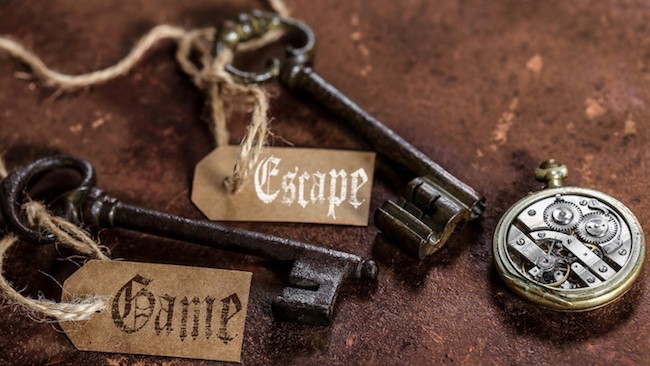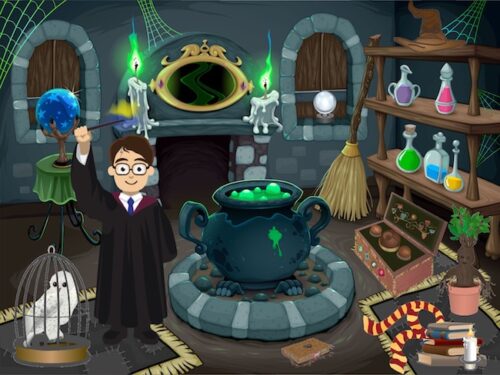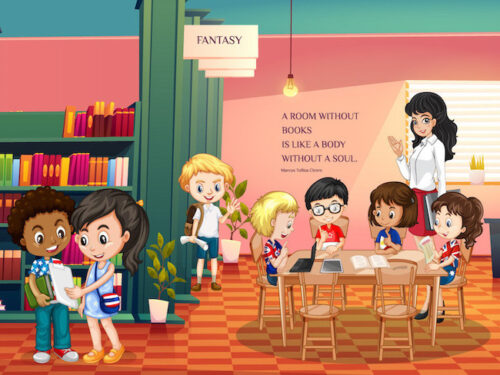Welcome to our thrilling escape room at school! Are you ready for an adventure filled with mystery, puzzles, and excitement? Our escape room is the perfect activity for children, families, and birthday celebrations, offering an immersive experience that combines fun and problem-solving.
In this unique escape room, players will embark on a journey within the walls of a school, where an intriguing story unfolds. They will be challenged to solve a series of puzzles, uncover hidden clues, and work together to unravel the mysteries that await them. With each puzzle solved, they will inch closer to the ultimate goal of completing the game and achieving victory.
Escape rooms have gained immense popularity due to their interactive nature and ability to foster critical thinking, teamwork, and creativity. By participating in our escape room at school, players will have the opportunity to develop these essential skills while having an unforgettable time with their friends and family.
Whether you’re searching for a memorable family activity, an engaging team-building experience, or a unique way to celebrate a birthday, our escape room at school is the perfect choice. Get ready to test your wits, uncover secrets, and create lasting memories as you embark on this thrilling adventure.
So gather your team, sharpen your problem-solving skills, and prepare for an unforgettable journey through our school-themed escape room. Are you up for the challenge? The clock is ticking, and the mysteries await. Let the adventure begin!
Presentation of the Rules
Before diving into the exciting world of our escape room at school, it’s important to familiarize yourself with the rules. Understanding and following these rules will ensure a smooth and enjoyable experience for everyone involved. Here’s an overview of the rules to keep in mind:
- Team Size and Composition: Determine the ideal team size for the game. Whether it’s playing with friends, family, or a mix of participants, establish the number of players that will work together to solve the puzzles and challenges.
- Time Limit: Set a specific time limit for completing the game. This adds a sense of urgency and excitement to the experience. Make sure all players are aware of the time constraint and encourage them to manage their time effectively to maximize their chances of success.
- Safety Instructions: Emphasize the importance of safety during the game. Remind players to be mindful of their surroundings, avoid running, and follow any specific safety guidelines for the school premises.
- Communication: Encourage open and effective communication among team members. Emphasize the importance of sharing information, ideas, and discoveries to progress through the game. Remind players that teamwork and collaboration are key to solving the challenges.
- Hints and Clues: Explain how players can request hints or clues if they encounter difficulties. Establish a system for providing hints that strikes a balance between assistance and maintaining the challenge level. Encourage players to rely on their problem-solving skills first before seeking hints.
- Game Etiquette: Remind players to respect the game environment, props, and clues. Stress the importance of not damaging or removing any items within the school premises. Encourage players to be mindful of others’ enjoyment and avoid spoiling puzzles or solutions for teammates.
- Game Master or Facilitator: Introduce the role of the game master or facilitator who will oversee the game and provide necessary instructions or guidance if required. Players should approach the game master for any rule clarifications or technical assistance during the game.
Remember, adhering to these rules will ensure a fair and enjoyable experience for all participants. By fostering a spirit of cooperation, communication, and adherence to safety guidelines, players can fully immerse themselves in the challenges and mysteries of the escape room at school. Good luck, and may your problem-solving skills lead you to triumph!
Check out our escape room kits to play with your family
Setting up the Intrigue for a school escape room
The success of an escape room at school lies in creating an intriguing and captivating storyline that immerses players into the game world. Setting up the intrigue involves introducing the context, story, and initial information that will fuel players’ curiosity and drive their desire to solve the puzzles. Here’s how to effectively set up the intrigue for your escape room at school:
- Choose a Compelling Theme: Select a theme that resonates with the school environment and appeals to the players’ interests. It could be a mystery, a treasure hunt, a mission, or any other exciting concept that will engage the participants.
- Establish the Backstory: Develop a backstory that sets the stage for the game. Create a captivating narrative that explains why the players find themselves in a challenging situation within the school. Consider incorporating elements of mystery, suspense, or adventure to pique players’ curiosity.
- Introduce the Objective: Clearly state the main objective or mission that players need to accomplish. It could be finding a hidden artifact, uncovering a secret, or solving a perplexing mystery. This objective will provide a clear focus for the players and guide their actions throughout the game.
- Provide Initial Information or Clues: Give players a starting point by providing them with initial information or clues. This could be a letter, a mysterious message, or a clue hidden within the game environment. These initial breadcrumbs will ignite players’ investigative spirit and set them on the path to uncovering the mysteries that lie ahead.
- Create a Sense of Urgency: Incorporate a time-sensitive element into the storyline to add excitement and a sense of urgency. This could be a ticking clock, a countdown, or a pressing deadline. The element of time will heighten the players’ engagement and motivate them to solve the puzzles swiftly.
- Maintain Coherence and Consistency: Ensure that the storyline, clues, and puzzles are coherent and consistent throughout the game. Avoid plot holes or inconsistencies that may confuse or frustrate the players. Create a logical flow of information and challenges that gradually reveal the bigger picture.
Remember, a well-crafted intrigue sets the stage for an immersive and captivating escape room at school. By creating an intriguing backstory, introducing a clear objective, and providing initial clues, you will engage the players’ curiosity and set them on an exciting journey to uncover the secrets within the school walls. Get ready to embark on an unforgettable adventure of intellect and discovery!
Puzzles and Challenges for a school escape room
The heart of any great escape room at school lies in the puzzles and challenges that players must conquer to progress through the game. These mind-bending obstacles test players’ logic, observation skills, and creativity. Here are some ideas and considerations for designing engaging puzzles and challenges:
- Variety of Puzzle Types: Incorporate a variety of puzzle types to cater to different skill sets and keep the game exciting. Consider including riddles, ciphers, math problems, wordplay, pattern recognition, and physical challenges that require dexterity or coordination.
- Integration with the School Environment: Make the puzzles and challenges seamlessly blend into the school environment. Utilize the unique features, rooms, and objects within the school to create a more immersive experience. For example, players may need to decipher a code hidden in a school mural or find a hidden key in the library.
- Progression of Difficulty: Design the puzzles and challenges to gradually increase in difficulty as players advance through the game. Start with simpler tasks to build confidence and gradually introduce more complex and intricate puzzles. This progression keeps players engaged and provides a sense of accomplishment as they overcome each challenge.
- Teamwork and Collaboration: Encourage teamwork and collaboration among players by designing puzzles that require multiple perspectives and contributions. Incorporate puzzles that necessitate communication, sharing of information, or simultaneous actions. This fosters cooperation and enhances the overall experience.
- Hands-On Interaction: Incorporate tactile and hands-on elements into the puzzles to create a more interactive experience. For example, players may need to physically manipulate objects, assemble pieces, or unlock compartments to reveal clues or solve puzzles.
- Hidden Clues and Red Herrings: Place hidden clues throughout the game that players must discover and interpret to progress. However, also introduce red herrings or misleading elements to challenge players’ critical thinking and discernment. This adds an extra layer of complexity and keeps players on their toes.
- Engaging Storytelling: Weave the puzzles and challenges into the overall narrative of the escape room. Each puzzle should serve a purpose in advancing the storyline or revealing crucial information. Incorporate storytelling elements to create a more immersive experience and keep players invested in solving the puzzles.
- Balance of Difficulty: Strike a balance between challenging and solvable puzzles. Avoid making the puzzles too easy or too difficult, as players may lose interest or become frustrated. Provide hints or clues when necessary to guide players in the right direction without giving away the solution outright.
Remember, the puzzles and challenges are the core components that make an escape room at school both thrilling and intellectually stimulating. By incorporating a variety of puzzle types, integrating them with the school environment, and ensuring a balanced level of difficulty, you will provide an immersive and satisfying experience for the players as they unravel the mysteries and triumph over each challenge. Good luck crafting mind-bending puzzles that will keep players engaged and excited throughout the game!
Clues and Hints for a school escape room
In an escape room at school, providing well-crafted clues and hints is essential to guide players and ensure they can progress through the challenges. Clues help players make connections, solve puzzles, and unlock new information, while hints provide subtle nudges when players get stuck. Here are some strategies for designing effective clues and hints:
- Gradual Revelation: Structure the clues in a way that they are revealed progressively, matching the players’ progress in the game. Start with more straightforward clues that lead to intermediate discoveries, and gradually unveil more complex information as players advance. This gradual revelation maintains a sense of discovery and keeps players engaged.
- Integration with the Environment: Integrate the clues seamlessly into the school environment. Hide clues within books, artwork, or objects, and ensure they blend naturally with the surroundings. This encourages players to explore their surroundings thoroughly and enhances the immersion of the game.
- Multiple Clue Formats: Present clues in various formats to cater to different players’ preferences and skills. Use written notes, visual symbols, audio recordings, or even interactive elements to engage players and stimulate their problem-solving abilities.
- Contextual Clues: Design clues that are contextually relevant to the puzzle or challenge they are associated with. Ensure that the clues provide information or insights that directly help players progress in solving the specific puzzle or uncovering the mystery. This enhances the sense of satisfaction when players make connections between clues and challenges.
- Subtle Hinting: When players face difficulties, provide hints that gently guide them in the right direction without giving away the solution outright. Hints can be delivered verbally or through written messages, allowing players to retain agency in their problem-solving process. Gradually escalate the level of hints if players continue to struggle, ensuring a suitable level of challenge.
- Collaboration Encouragement: Structure hints in a way that promotes collaboration among players. Encourage teammates to share information and ideas, and design hints that require input from multiple players to be fully understood. This fosters teamwork and enhances the overall experience.
- Flexibility and Adaptability: Be prepared to adjust the level and timing of hints based on players’ needs. Monitor their progress and intervene with hints when necessary, but also allow them enough space to think and explore independently. Strike a balance between providing support and allowing players to overcome challenges on their own.
- Clues as Rewards: Use the discovery of clues as a reward for players’ achievements. When players successfully solve a puzzle or overcome a challenge, provide them with a clue that leads them to the next stage of the game. This reinforces a sense of progress and accomplishment.
Final Key and Resolution
The final key and resolution of an escape room at school are the culmination of players’ efforts, leading them to the ultimate goal of the game. It’s the moment of triumph and satisfaction when players unlock the final puzzle, unravel the mystery, and accomplish their mission. Here’s how to design the final key and resolution for an unforgettable escaperoom experience:
- Build Tension and Excitement: As players approach the final stages of the game, create a sense of heightened tension and excitement. Use suspenseful music, time pressure, or visual cues to intensify the atmosphere and engage players’ emotions.
- Final Puzzle: Design a challenging and multi-layered final puzzle that requires players to apply their accumulated knowledge and skills from throughout the game. This puzzle should incorporate elements from previous puzzles or clues, encouraging players to connect the dots and make meaningful connections.
- Meaningful Reward: The final key should serve as a meaningful reward for players’ perseverance and problem-solving abilities. Consider using a physical prop, such as a hidden compartment, a locked box, or a digital code, that players must unlock to retrieve the final key. The key itself can be intricately designed to add to the sense of achievement.
- Revelatory Moment: When players successfully unlock the final puzzle and obtain the key, create a revelatory moment. This can be accompanied by an audio cue, a sudden change in lighting, or the reveal of a hidden message, signaling their accomplishment and progress towards the resolution.
- Resolution of the Storyline: The final key should lead players to the resolution of the storyline or mission. This can involve discovering a hidden treasure, solving a mystery, or completing a significant objective. Consider incorporating a satisfying narrative conclusion that ties up loose ends and rewards players’ dedication.
- Celebration and Recognition: Celebrate players’ victory by acknowledging their success and achievements. Consider organizing a small celebration, such as applause, confetti, or a congratulatory message. Share the time taken to complete the game, highlight notable accomplishments, and praise players’ problem-solving skills and teamwork.
- Closing Remarks: Conclude the game with closing remarks, expressing gratitude to the players for their participation and highlighting the highlights of the experience. Encourage players to reflect on their journey, share their thoughts, and provide feedback, creating a space for discussion and engagement.
Remember, the final key and resolution are the climactic moments of the escape room at school. By designing a challenging and meaningful final puzzle, providing a sense of accomplishment, and delivering a satisfying conclusion to the storyline, you will leave players with a lasting impression and a sense of fulfillment. Celebrate their success and make the resolution an unforgettable moment that rewards their efforts and teamwork.
Check out all our treasure hunt games to liven up a birthday party for children from 4 to 12 years old.
Conclusion
The conclusion of an escape room at school marks the end of an exhilarating and intellectually stimulating adventure. It’s a moment to reflect on the journey, celebrate achievements, and express gratitude to the players for their participation. Here’s how to wrap up the escape room with a memorable conclusion:
- Reflection on the Experience: Start the conclusion by encouraging players to reflect on their experience. Prompt them to share their thoughts, feelings, and observations about the game. Ask open-ended questions that allow players to express their favorite moments, challenges they enjoyed, or insights they gained.
- Celebration of Accomplishments: Celebrate the players’ accomplishments and the successful completion of the escape room. Acknowledge their problem-solving skills, teamwork, and perseverance throughout the challenges. Highlight notable achievements, such as particularly difficult puzzles solved or impressive time management.
- Performance and Time Evaluation: Share the players’ performance statistics, such as the time taken to complete the game, percentage of puzzles solved, or any other relevant metrics. Compare their performance to previous groups, if applicable, to provide context and a sense of accomplishment.
- Expressing Gratitude: Express gratitude to the players for their participation and engagement. Thank them for their enthusiasm, creativity, and dedication throughout the game. Let them know that their involvement made the escape room at school a memorable and enjoyable experience.
- Feedback and Suggestions: Create an opportunity for players to provide feedback and suggestions. Ask them to share any ideas for improvement, highlight aspects they particularly enjoyed, or suggest future themes or challenges. This feedback will help enhance future escape rooms and tailor the experience to players’ preferences.
- Farewell and Well Wishes: Bid players a fond farewell, emphasizing that their participation was valued and appreciated. Extend well wishes for their future endeavors and express hope that they will carry the problem-solving skills and teamwork they developed during the game into other aspects of their lives.
- Call to Action: End the conclusion by providing a call to action, such as inviting players to explore other escape rooms, share their experience with friends and family, or consider future collaborations or events. Encourage them to stay connected with the school or organization hosting the escape room for updates on upcoming activities.
Remember, the conclusion of an escape room at school is an opportunity to reflect on the experience, celebrate accomplishments, express gratitude, and gather valuable feedback. By creating a positive and engaging conclusion, you leave players with a sense of fulfillment, a desire for future adventures, and a lasting memory of the thrilling escape game they enjoyed.
Debriefing
The debriefing session following an escaperoom at school is a valuable opportunity to engage with the players, discuss their experiences, and reflect on the game’s outcomes. It allows for a deeper understanding of the players’ perspectives, insights, and lessons learned. Here’s how to conduct an effective debriefing session:
- Welcome and Appreciation: Begin the debriefing by welcoming the players and expressing appreciation for their participation. Thank them for their time, enthusiasm, and active involvement throughout the escape room.
- Open Discussion: Encourage an open and inclusive discussion among the players. Create a safe and supportive environment where everyone feels comfortable sharing their thoughts and opinions. Remind players that all perspectives are valuable and should be respected.
- Reflection on Challenges: Prompt players to reflect on the challenges they encountered during the game. Ask them to share the puzzles or moments that they found particularly difficult, intriguing, or satisfying. Discuss the strategies they employed to overcome obstacles and how they approached problem-solving as a team.
- Teamwork and Communication: Explore the dynamics of teamwork and communication within the group. Ask players to reflect on how effectively they collaborated, shared information, and made collective decisions. Discuss the strengths of teamwork and identify areas for improvement.
- Critical Thinking and Creativity: Engage players in a conversation about the critical thinking and creative skills they utilized during the escape room. Encourage them to share examples of instances where they had to think outside the box, make connections, or apply innovative approaches to solve puzzles.
- Learning and Personal Growth: Encourage players to reflect on what they learned from the escape game experience. Ask them to identify any new skills they developed or insights they gained. Discuss how these skills and insights can be transferred to other areas of their lives, such as problem-solving in academics or everyday challenges.
- Feedback and Suggestions: Invite players to provide feedback on the escape room. Ask them to share their thoughts on the overall design, puzzle difficulty, storyline, and any other aspects they feel relevant. Encourage them to offer constructive suggestions for future improvements or themes they would like to explore.
- Closing Remarks: Conclude the debriefing session with closing remarks that summarize the key takeaways and highlights of the discussion. Thank the players once again for their active participation and for sharing their valuable insights. Express the hope that the escape room experience was enjoyable, educational, and memorable for all.
Remember, the debriefing session is an opportunity to gain valuable feedback, foster learning, and strengthen the connection between players and the school or organization hosting the escape room. By facilitating an open and reflective discussion, you can deepen the players’ understanding of their experience and promote personal growth. Use their feedback to refine future escape rooms and ensure an even more engaging and rewarding experience for future participants.

















